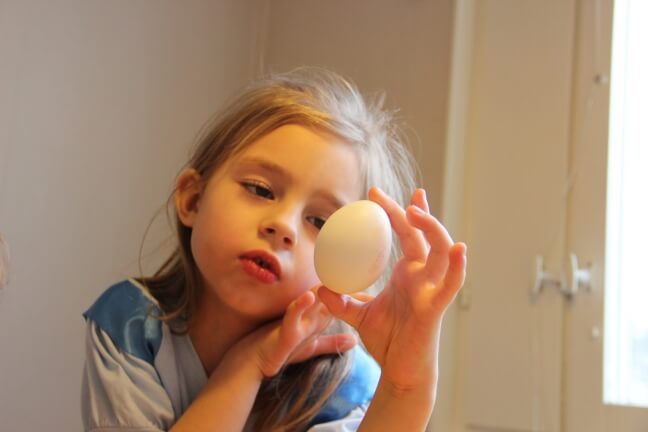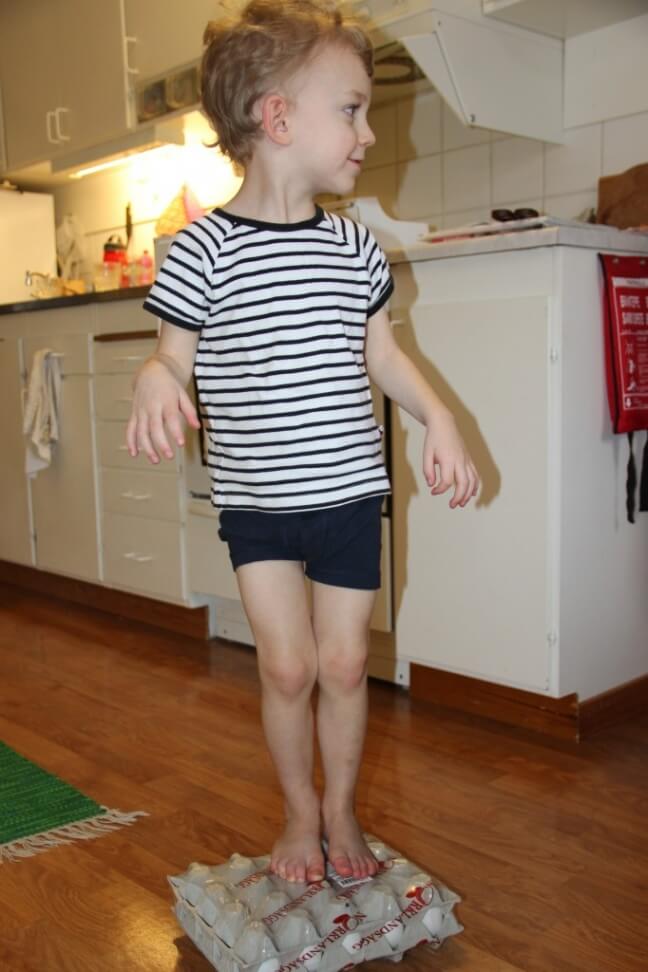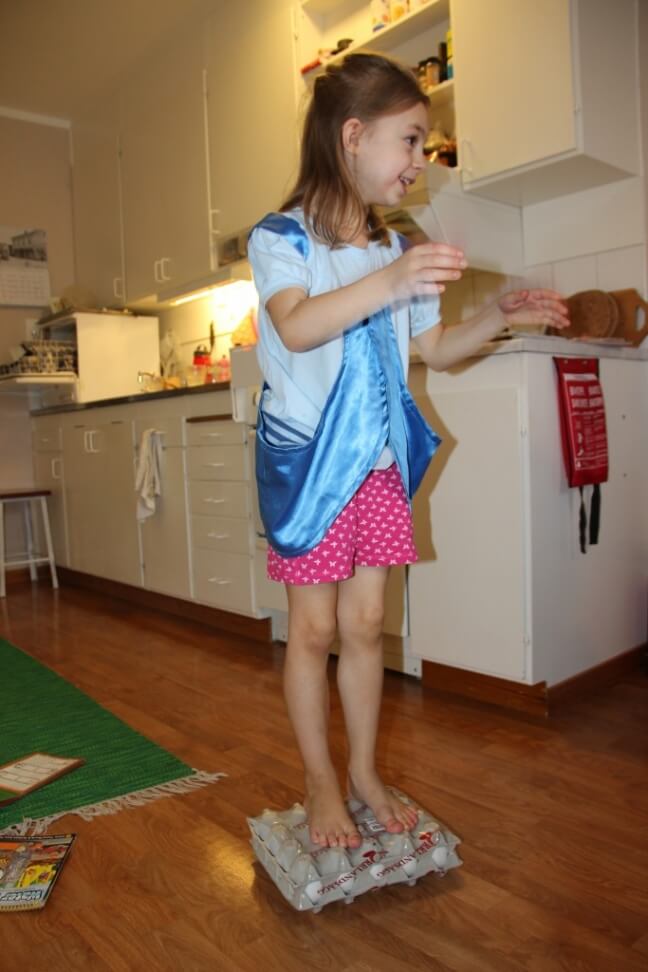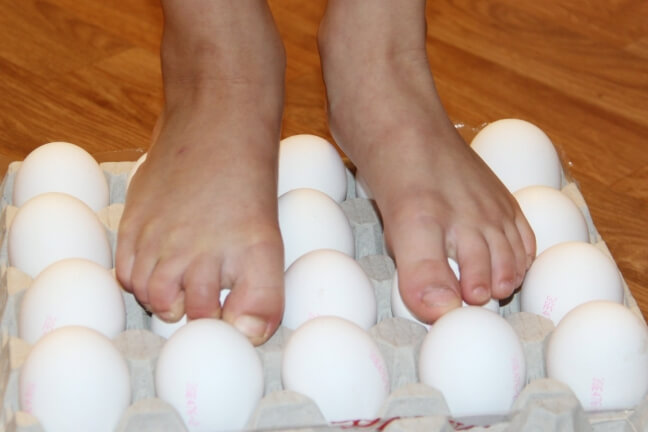Spring break meant a chance for us to be home together even more than usual, so I wanted to plan a fun theme for the week. The Cat in the Hat has been a favorite around here lately, so I went for a Dr. Seuss week. The fact that the week also coincided with Dr. Seuss’ birthday (March 2) meant that there were tons of ideas floating around Pinterest to borrow and find inspiration. I couldn’t have planned it better if I’d tried!
Despite the popularity of the cat, I opted to begin the week with Green Eggs and Ham because…
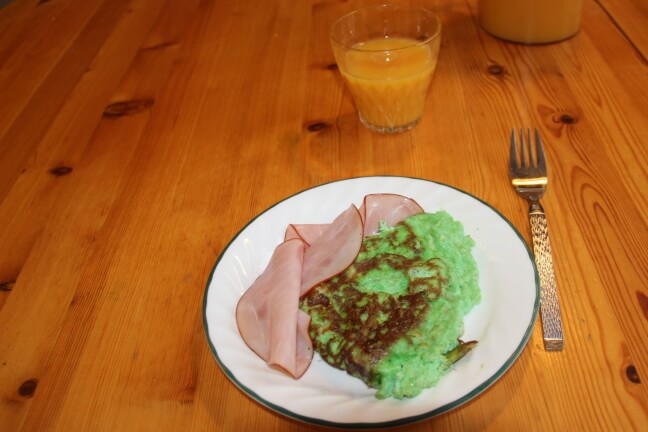
… what better way to start off a special week than with a surprise special breakfast?!
They were so excited and the tone was set: This is going to be a fun week!
After breakfast we got out the book and I started reading. After a few pages, Emelie wanted to take over and read most of the book with great fluency and inflection! Toward the end, the kids got inspired to act out the story, so when we’d finished it, we started over. This time, Mamma was the narrator, Emelie was the “grumpy guy” and Peter was Sam-I-Am. One of my favorite things about homeschooling is the freedom to follow their interests and ideas even if it’s not what I have planned!
It was a fun idea, but it didn’t last that long. They didn’t really have the patience to go through the whole story a second time, and they got very silly with their acting out, which led to bickering over who was going to be which character and how it should be acted. So we put the book away and changed gears. Time for…
An “Eggs-periment”
We talked about eggs. We looked at eggs, felt eggs, observed eggs and discussed what they already knew about eggs. They knew that we have to be very careful with eggs, and when we’re baking they can crack the eggs by tapping them with a fork. What about the eggs we don’t buy at the store, but the ones with baby chicks growing in them? Those shells protect the chick, but have to be breakable enough for the chick to peck out when it’s ready. But the hen sits on them to keep them warm! How does she sit on them without breaking them? That was the question to investigate: How can eggs be both fragile and strong at the same time?
There were so many things to discuss here, and their curiosity was really piqued. We talked about how eggs can be shipped from the farm to the store in a bumpy truck without breaking. Of course the package protecting them is important. After some more egg observation, I issued the challenge. Do you think you can stand on this package of eggs?
Jaws dropped and eyes grew wide as surprise mixed with skepticism and excitement. The grocery bag with the eggs is always off-limits. The message about eggs is always, “Be careful!” They weren’t sure this was a good idea and clearly thought it very surprising that I’d even suggest it. But, with the package closed, I placed the tray of 20 eggs on the floor and offered them to try.
“Peter first,” said Emelie. “He’s smaller.”
No broken eggs. “Okay,” she said, “my turn!”
Still no broken eggs.
But the only way to test if it’s just the package that is strong is to remove the lid and try it again.
Again they were skeptical. Again the suggestion for Peter to try first.
It was much bumpier, and a little more difficult to balance, but the eggs were strong enough to hold Peter. Emelie’s caution was defeated by her curiosity and excitement and she climbed up too.
No broken eggs.
I pointed out how the package keeps the eggs standing vertically, and we talked about how we usually turn them sideways when we break them. The eggs seem stronger in one direction than the other. This led us to discuss the strength of the arch shape.
We went to the computer and looked at pictures of arches in architecture, both old and new. We saw how strong arches are to support large and heavy stone structures like cathedrals.
Arches in Uppsala Cathedral, Sweden (Uppsala domkyrka)
They were fascinated. But now the new frustration: you can’t really build arches with Duplo, “and that would make my castle much stronger.”


